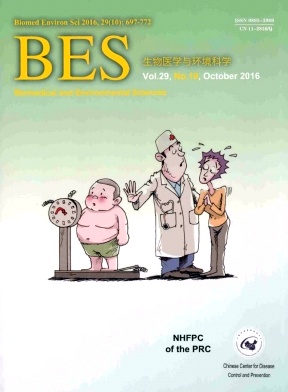Characterization of Avian Influenza A (H7N9) Virus Prevalence in Humans and Poultry in Huai′an, China:Molecular Epidemiology, Phylogenetic, and Dynamics Analyses
doi: 10.3967/bes2016.099
-
Key words:
- Molecular epidemiology /
- H7N9 Virus /
- Phylogenetictree /
- Phylodynamic analysis
Abstract: ObjectiveTo trace the source of human H7N9 cases in Huai’an and elucidate the genetic characterization of Huai’an strains associated with both humans and birds in live poultry market. MethodsAn enhanced surveillance was implemented when the first human H7N9 case was confirmed in Huai’an. Clinical specimens, cloacal swabs, and fecal samples were collected and screened by real-time reverse transcription-polymerase chain reaction (RT-PCR) for H7N9 virus. The positive samples were subjected to further RT-PCR and genomesequencing. The phylodynamic patterns of H7N9 virus within and separated from Huai’an and evolutionary dynamics of the virus were analyzed. ResultsSix patients with H7N9 infection were previously exposed to live poultry market and presented symptoms such as fever (>38.0 °C) and headaches. Results of this study support the hypothesis that live poultry markets were the source of human H7N9 exposure. Phylogenetic analysis revealed that all novel H7N9 viruses, including Huai’an strains, could be classified into two distinct clades, A and B. Additionally, the diversified H7N9 virus circulated in live poultry markets in Huai’an. Interestingly, the common ancestors of the Huai’an H7N9 virus existed in January 2012. The mean nucleotide substitution rates for eachgene segment of the H7N9 virus were(3.09-7.26)×10?3 substitutions/site peryear (95% HPD: 1.72×10?3 to 1.16×10?2). ConclusionOverall, the source of exposure of human H7N9 cases in Huai'an was live poultry market, and our study highlights the presence of divergent genetic lineage of H7N9 virus in both humans and poultry specimens in Huai’an.
| Citation: | YANG Peng Fei, YAN Qing Li, LIU Chun Cheng, XING Ya Dong, ZHANG Min Hui, GAO Qiang, YU Hao, YAO Hai Bo, HE Nan Jiang. Characterization of Avian Influenza A (H7N9) Virus Prevalence in Humans and Poultry in Huai′an, China:Molecular Epidemiology, Phylogenetic, and Dynamics Analyses[J]. Biomedical and Environmental Sciences, 2016, 29(10): 742-753. doi: 10.3967/bes2016.099 |







 Quick Links
Quick Links
 DownLoad:
DownLoad: